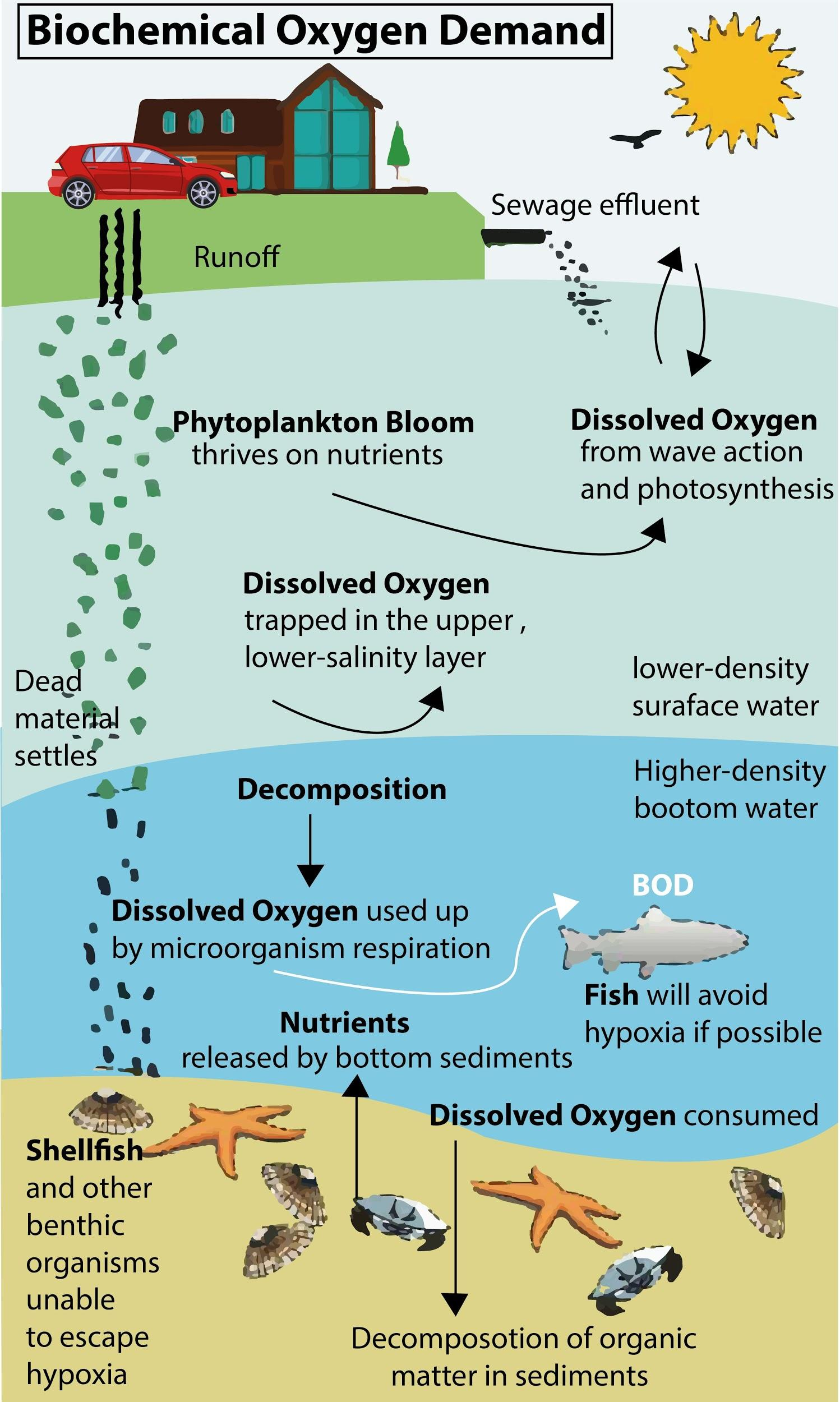
Biochemical Oxygen Demand (BOD) may not be a good index for pollution of water bodies receiving effluents from
(a) Petroleum industry
(b) Sugar industry
(c) Domestic Sewage
(d) Dairy industry
Answer
474.3k+ views
Hint: Biochemical Oxygen Demand refers to the amount of dissolved oxygen required for the aerobic organisms to break down organic matter in the water sample. Wastewater containing inorganic substances block oxygen from reaching the aquatic species present beneath the surface of the water, creating difficulties in estimating the Biochemical Oxygen Demand.
Complete answer:
BOD stands for Biochemical Oxygen Demand which refers to the amount of the dissolved oxygen needed for the aerobic organisms to break down organic matter in a water sample at a certain temperature over a specific time. The waste product from the sugar and dairy industry is in the form of organic waste which is rich in nitrates and phosphates. Thus, it increases the microbes in the water body.
- For the breakdown of organic matter, the microbes need to be dissolved oxygen from the water.
- If the biochemical oxygen demand level is higher then it indicates that the water body is highly polluted. - Sewage waste also contains organic matter for microbes to break it down by consuming dissolved oxygen.
- On the contrary, petroleum waste such as oil spills in the ocean contains inorganic waste.
- They do not encourage the growth of microbes in the water bodies.
- This creates difficulties in the estimation of the biochemical oxygen demand.
- Also, the oil spills create a layer on the water surface that blocks the oxygen.
- This creates insufficient oxygen for the microbes present in the water body.
- Thus, BOD stands a bad index for calculating the level of pollution caused by the petroleum industries. - When the BOD level is high for the water sample, it indicates a high level of pollution.
- When the BOD level is low for the water sample, it indicates low levels of pollution.

So, the correct answer is the ‘(a) Petroleum industry’.
Note: higher levels of BOD indicate a lower amount of oxygen available for aquatic species which results in the death of aquatic species. Poorly treated wastewater results in higher levels of Biochemical Oxygen Demand. The untreated wastewater allows the microbes, zooplankton, algae, and many other organisms which do not allow the aquatic organisms to get sufficient oxygen for themselves.
Complete answer:
BOD stands for Biochemical Oxygen Demand which refers to the amount of the dissolved oxygen needed for the aerobic organisms to break down organic matter in a water sample at a certain temperature over a specific time. The waste product from the sugar and dairy industry is in the form of organic waste which is rich in nitrates and phosphates. Thus, it increases the microbes in the water body.
- For the breakdown of organic matter, the microbes need to be dissolved oxygen from the water.
- If the biochemical oxygen demand level is higher then it indicates that the water body is highly polluted. - Sewage waste also contains organic matter for microbes to break it down by consuming dissolved oxygen.
- On the contrary, petroleum waste such as oil spills in the ocean contains inorganic waste.
- They do not encourage the growth of microbes in the water bodies.
- This creates difficulties in the estimation of the biochemical oxygen demand.
- Also, the oil spills create a layer on the water surface that blocks the oxygen.
- This creates insufficient oxygen for the microbes present in the water body.
- Thus, BOD stands a bad index for calculating the level of pollution caused by the petroleum industries. - When the BOD level is high for the water sample, it indicates a high level of pollution.
- When the BOD level is low for the water sample, it indicates low levels of pollution.

So, the correct answer is the ‘(a) Petroleum industry’.
Note: higher levels of BOD indicate a lower amount of oxygen available for aquatic species which results in the death of aquatic species. Poorly treated wastewater results in higher levels of Biochemical Oxygen Demand. The untreated wastewater allows the microbes, zooplankton, algae, and many other organisms which do not allow the aquatic organisms to get sufficient oxygen for themselves.
Recently Updated Pages
Basicity of sulphurous acid and sulphuric acid are

Master Class 12 Economics: Engaging Questions & Answers for Success

Master Class 12 Maths: Engaging Questions & Answers for Success

Master Class 12 Biology: Engaging Questions & Answers for Success

Master Class 12 Physics: Engaging Questions & Answers for Success

Master Class 12 Business Studies: Engaging Questions & Answers for Success

Trending doubts
Which are the Top 10 Largest Countries of the World?

Draw a labelled sketch of the human eye class 12 physics CBSE

Differentiate between homogeneous and heterogeneous class 12 chemistry CBSE

What is a transformer Explain the principle construction class 12 physics CBSE

What are the major means of transport Explain each class 12 social science CBSE

How much time does it take to bleed after eating p class 12 biology CBSE




